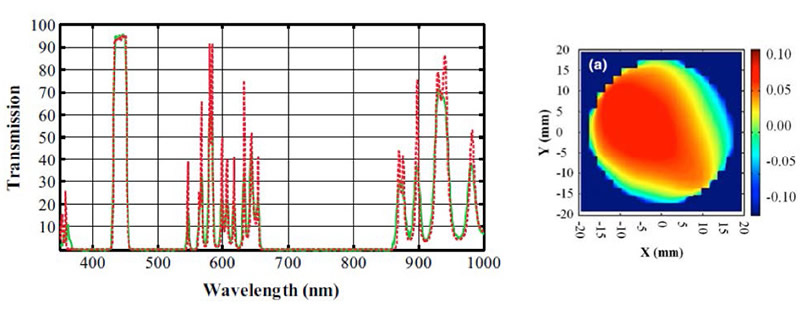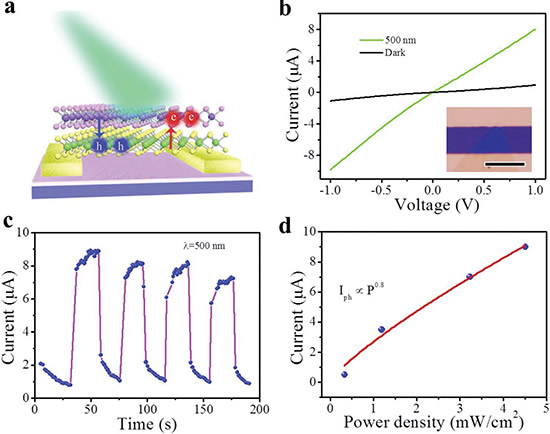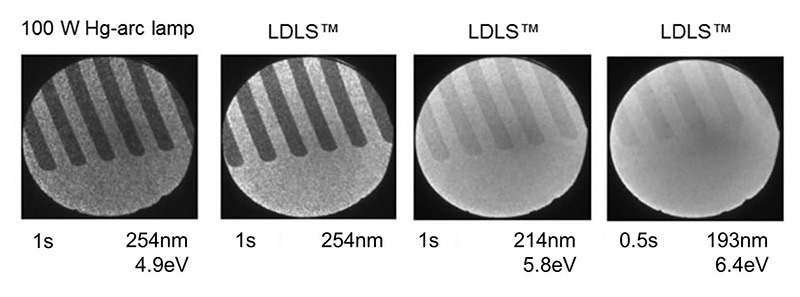Laser-Driven Light Sources for Material Science Applications
Author: S. Gunnell
Energetiq Technology is a developer and manufacturer of ultra-bright broadband light sources for a variety of advanced applications in life and materials sciences, semiconductor manufacturing, and R&D. Energetiq’s Laser-Driven Light Sources (LDLS) are based on revolutionary technology that generates high brightness across the spectrum, with high reliability and long life.
Key Advantages of LDLS:
- Broadband spectral output (170 nm-2100 nm)
- Small plasma size (~100 μm)
- Very high brightness
- Excellent spatial and power stability
- Long life of over ~10,000 hours
High Performance Analytical Spectroscopy
High Performance Analytical Spectroscopy is widely used in materials sciences to analyze the molecular composition of complex materials or to characterize the performance of optics based on novel materials and processes. To achieve the most precise analyses, wavelengths that cover the range from the deepest ultraviolet through visible and into the near infrared are required. Traditionally, combinations of deuterium lamps and tungsten halogen lamps have been used. These lamps suffer from short operating life, low brightness and limited spectral range. Energetiq’s EQ-99X and EQ-77 Laser-Driven Light Sources offer much higher brightness across the whole spectrum, from 170 nm to 2100 nm (UV-Vis-NIR) and an order of magnitude longer life, enabling a new class of instruments capable of analyzing much smaller, more optically dense samples with high precision and throughput.
Researchers at Institute Fresnel in Marseilles, France used the EQ-99X to characterize the performance of complex optical interference filters for use on a proposed satellite instrument, which they designed and fabricated to meet demanding constraints for high transmission in the selected spectral band, excellent rejection of all the remaining part of the spectrum, and spatial uniformity of the transmission characteristics over the filter’s area. The broadband output of the LDLS, combined with its unique high brightness, spatial and temporal flux stability allowed for filter characterization across a wide spectrum using a single light source, as well as spatially resolved uniformity measurements of the spectral transmission over the entire filter aperture. [1].

Above Left: Comparison between theoretical and experimental transmission of the filter (experimental data in green solid line and theoretical data in red dotted line). Above Right: Spectral transmission spatial uniformity across filter aperture area.
Characterization of Nanomaterials
Nanomaterials are making novel and far-reaching impacts in almost every field imaginable. Because of its exceptional brightness and stability, Energetiq’s Laser-Driven Light Sources have proven to be valuable and flexible tools for characterizing a diverse array of nanomaterial types, including but not limited to monolayers, nanowires, and nanoparticles. The LDLS enables and enhances a variety of techniques for characterizing the physical and optoelectronic properties of novel photodetectors, solar cells, plasmonic devices, photocatalytic materials, and more.
For example, researchers at the Huazhong University of Science and Technology used the EQ-77 LDLS to illuminate photodetectors that they fabricated from 2D SnSe2/MoS2 layered heterostructures. Even when its broadband output is filtered to provide the required narrow-band 500nm illumination, the EQ-77 offers superior power density, uniformity, and stability for the precise measurements needed to characterize these photodetectors. As shown in the figure below, they were able to demonstrate an impressive 9.1 x 103 A/W photoresponsivity under 4.51 mW/cm2 500nm illumination, 2 orders of magnitude higher than achieved with MoS2 -only based photodetectors. [2]

Above: (a) A schematic diagram of the charge transfer at the interface of the SnSe2 /MoS2 heterostructure based photodetector under light illumination. (b) I–V curves of the SnSe2 /MoS2 heterostructure under dark and 500 nm light illumination. Inset: optical image of device, scale bar = 5 μm. (c) Time-dependent photoresponse of the photodetector under 500 nm light illumination. (d) Illuminated light intensity-dependent photoresponse of the photodetector under 500 nm light illumination at a bias of 1 V.
Photoemission Electron Microscopy (PEEM)
Surface Science techniques in the materials sciences, such as Photoemission Electron Microscopy (PEEM), can take advantage of the high brightness and deep ultraviolet output of LDLS sources such as the EQ-77. In PEEM applications, the high photon energy, i.e. short wavelength, light must be focused to a small spot on the sample, perhaps 100μm in diameter. Usually this must be accomplished at a significant working distance and through a vacuum window in the PEEM instrument. Traditional Xenon (Xe) and Mercury (Hg) arc sources have low output in the 200 nm wavelength range, and their large plasma size makes imaging the source on the sample an inefficient process. By contrast, the ~150 μm diameter high-brightness plasma in the EQ-77 allows straightforward and efficient re-imaging of the source on the sample, even with a long working distance. The high output of short wavelengths, usually selected from the broadband LDLS spectrum by narrow bandpass filters, has been demonstrated to produce PEEM images with significant intensity and contrast.
The small plasma size allows fine focusing at long working distances while the high brightness provides more contrast than any other light source. Examples of this contrast are shown below in a test executed at Arizona State University’s Physics Department.

Above: The first two images shown above are the results from a Hg-arc lamp and our EQ-77 (respectively) at 254 nm. Looking between these two images, it’s clear that the EQ-77 provides much greater contrast than the traditional Hg-arc lamp. The second set of pictures is the EQ-77 at 214 nm and 193 nm without any comparison to the Hg-arc lamp. PEEM with traditional Hg-arc lamps at these wavelengths results in an indistinguishable image with zero contrast.
The EQ-77 is a superior light source for PEEM applications when compared to traditional light sources because of its extremely high brightness output and very small plasma size which gives users the most light when focused on to a small spot.
Sources
[1] Begou, T., Krol, H., Stojcevski, D. et al. Complex optical interference filters with stress compensation for space applications. CEAS Space J (2017). (https://doi.org/10.1007/s12567-017-0149-5)
[2] Zhou, Xing & Zhou, Nan & Li, Chao & Song, Hongyue & Zhang, Qi & Hu, Xiaozong & Gan, Lin & Li, Huiqiao & Lü, Jing-Tao & Luo, Jun & Xiong, Jie & Zhai, Tianyou. (2017). Vertical heterostructures based on SnSe2 /MoS2 for high performance photodetectors. 2D Materials. 4. 025048. 10.1088/2053-1583/aa6422
[3] Energetiq would like to thank Gary Hembree and Robert Nemanich of Arizona State University Department of physics for their collaboration on this project and for providing the images.


